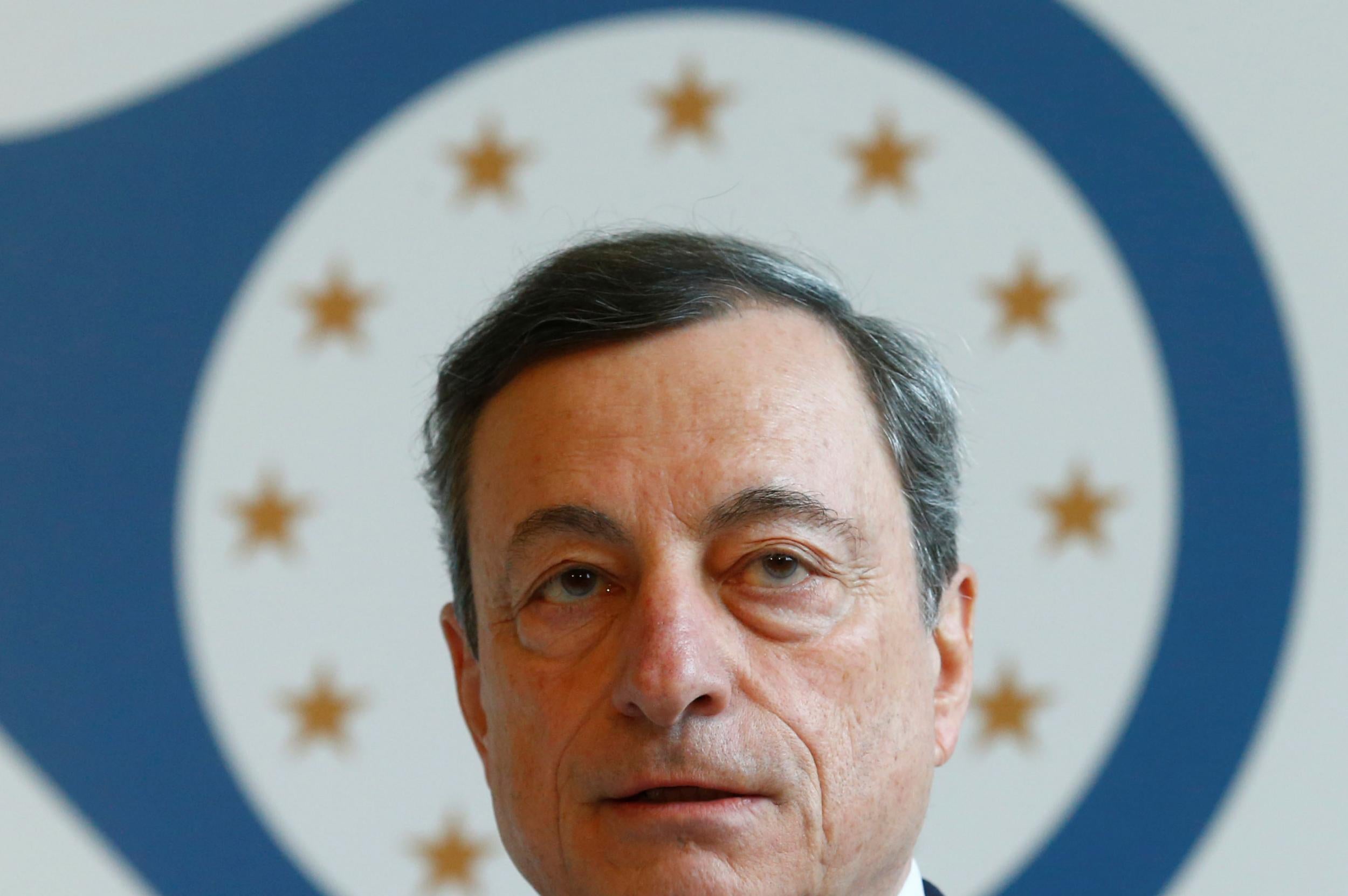The European Central Bank is set to bring the curtain down on its €2.4 trillion (£2.1 trillion) asset purchase programme in December, it said in a statement on Thursday.
After meeting in Riga, the ECB said purchases of eurozone government and corporate bonds would taper down from the current €30bn a month rate to €15bn a month in September and then finally end two months later.
The decision represents a belief in the central bank that the eurozone economy, after years of weakness and recession, is now sufficiently robust that it can start to withdraw monetary stimulus.
However, the ECB kept its refinancing interest rate on hold at 0 per cent and its deposit rate steady at 0.4 per cent and added that it expected these rates to remain at their current levels “at least through the summer of 2019 and in any case for as long as necessary to ensure that the evolution of inflation remains aligned with the current expectations of a sustained adjustment path”.
“The ECB’s announcement that it will end its asset purchases in December is probably a little bolder than markets had expected, but this is tempered by the pledge to keep interest rates on hold for more than a year,” said Jennifer McKeown of Capital Economics.
The euro dropped to $1.1693 (£0.88) in the wake of the statement, down 0.81 per cent on the day. The yield on Italian 10-year bonds, securities that have been volatile in recent weeks due to political turmoil in Rome, were steady at 2.798 per cent.
Data from the ECB shows it had accumulated a total of €2.4 trillion of assets on its balance sheet in April. It first began buying bonds in order to increase the single currency zone’s money supply and avert the threat of deflation in the eurozone in March 2015.
Inflation in the single currency hit 1.9 per cent in May, up from 1.2 per cent in April and roughly level with the ECB’s target of just under 2 per cent.
However, core inflation, which excludes volatile food and energy, was still only 1.1 per cent.
GDP growth also slipped to 0.4 per cent in the first quarter of 2018, down from 0.7 per cent in the final quarter of 2017.
In its latest forecasts the ECB revised down its GDP projection for 2018 to 2.1 per cent, down from 2.4 per cent previously. The 2019 and 2020 forecasts were unchanged at 1.7 per cent.
It now sees inflation over 2018 as a whole as 1.7 per cent, up from 1.4 per cent in March.
In his post-meeting press conference the ECB’s president, Mario Draghi, said that there remained risks to the growth outlook.
“The risks surrounding the euro area growth outlook remain broadly balanced. Nevertheless, uncertainties related to global factors, including the threat of increased protectionism, have become more prominent,” he said.
“This is a pretty cautious message from the ECB. By saying the QE [quantitative easing] programme will end this year but not signalling a rate hike until at least next summer Draghi is giving with one hand and taking away with the other,” said Patrick O’Donnell of Aberdeen Standard Investments.
Subscribe to Independent Premium to bookmark this article
Want to bookmark your favourite articles and stories to read or reference later? Start your Independent Premium subscription today.


Join our commenting forum
Join thought-provoking conversations, follow other Independent readers and see their replies